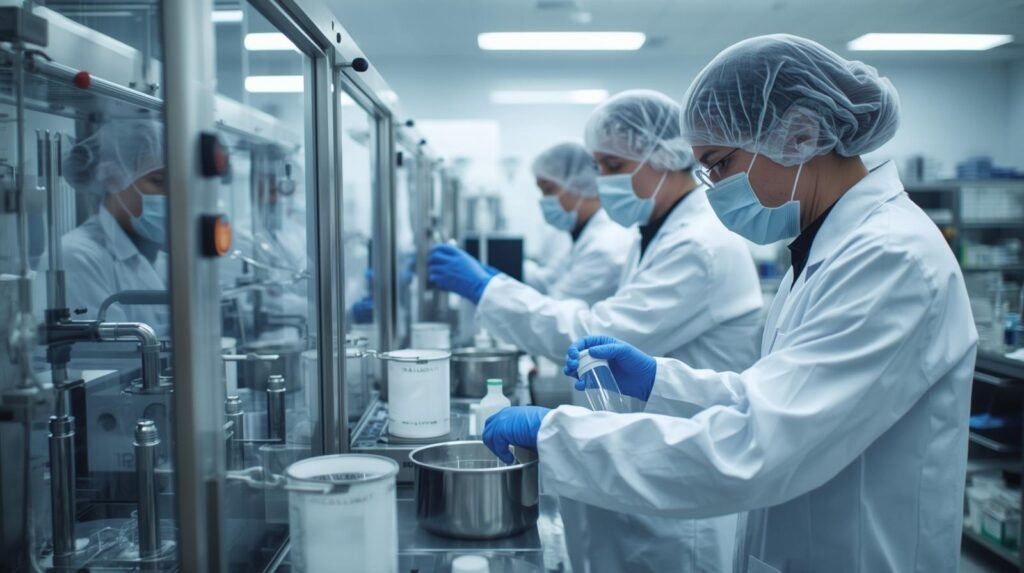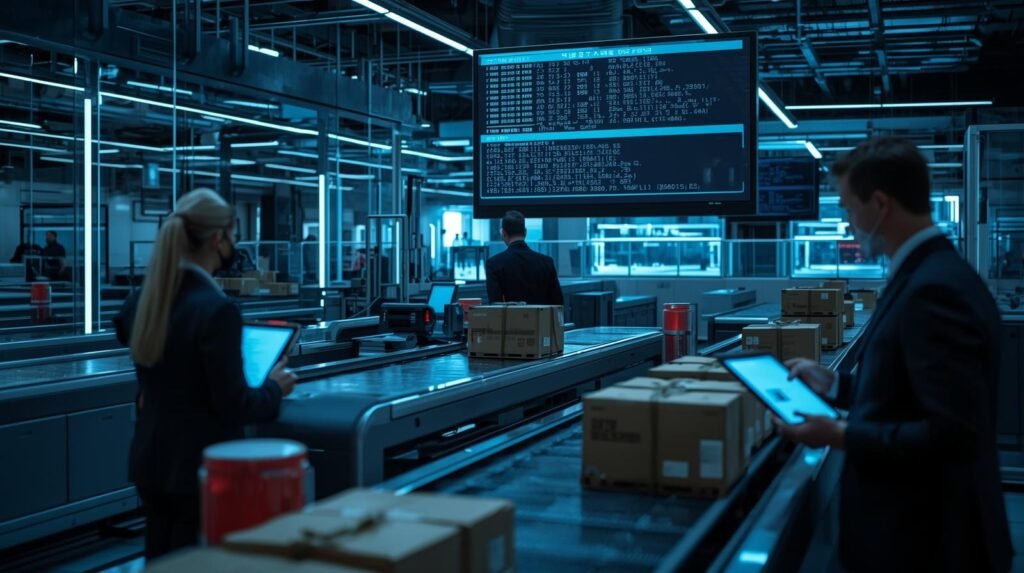
The global peptide therapeutics market, projected to reach $75 billion by 2028, faces a critical manufacturing challenge: ensuring complete removal of peptide residues from equipment surfaces to prevent cross-contamination and ensure patient safety. With regulatory agencies increasing scrutiny and 42% of FDA warning letters citing inadequate cleaning validation, pharmaceutical manufacturers must implement robust detection methods capable of identifying residual peptides at levels as low as 10 parts per billion. High-Performance Liquid Chromatography (HPLC) coupled with Mass Spectrometry (MS) has emerged as the gold standard for peptide cleaning validation, offering detection sensitivities 100-1000 times greater than traditional methods while providing the specificity needed to distinguish between structurally similar peptides. This comprehensive analysis examines how advanced HPLC-MS methods are transforming peptide cleaning validation from a compliance exercise to a strategic quality assurance tool, enabling manufacturers to achieve regulatory compliance, reduce contamination risks, and maintain product integrity in an increasingly complex therapeutic landscape.
Introduction to Peptide Cleaning Validation
Cleaning validation represents a critical quality assurance process in peptide pharmaceutical manufacturing, ensuring that equipment residues from previous production batches do not contaminate subsequent products. The unique properties of peptides—including their stability, solubility characteristics, and potential immunogenicity—make cleaning validation particularly challenging and essential.
The Critical Importance of Cleaning Validation in Peptide Manufacturing
Effective cleaning validation is not merely a regulatory requirement but a fundamental patient safety imperative:
- Patient Safety Assurance: Prevents adverse reactions from cross-contamination between potent peptide therapeutics.
- Regulatory Compliance: Meets FDA, EMA, and other regulatory agency requirements for manufacturing quality.
- Product Quality Maintenance: Ensures therapeutic efficacy and purity by eliminating carryover contamination.
- Operational Efficiency: Reduces batch rejection rates and manufacturing downtime due to contamination issues.
Unique Challenges in Peptide Residue Detection
Peptide residues present specific detection challenges that require specialized analytical approaches:
- Low Concentration Requirements: Detection limits often required at ng/mL levels or lower.
- Structural Complexity: Similar peptide structures require high specificity methods.
- Surface Adsorption: Peptides tend to adhere strongly to manufacturing equipment surfaces.
- Solubility Issues: Variable solubility characteristics complicate extraction and detection.
“Cleaning validation for peptide manufacturing isn’t just about meeting regulatory thresholds—it’s about demonstrating absolute control over processes that directly impact patient safety. HPLC-MS methods provide the scientific evidence needed to prove that control beyond any doubt.” — Dr. Sarah Chen, Director of Quality Assurance, Global Peptide Manufacturer.
HPLC Methods for Residual Peptide Detection
High-Performance Liquid Chromatography serves as the foundation for sensitive and specific peptide residue detection, offering robust separation capabilities essential for accurate quantification.
HPLC Method Development for Peptide Applications
Developing effective HPLC methods requires careful optimization of multiple parameters:
- Column Selection: C18 columns with 300Å pore size optimal for peptide separation.
- Mobile Phase Optimization: Acetonitrile/water gradients with 0.1% formic acid for optimal peak shape.
- Detection Wavelength: 214nm for peptide bond detection provides maximum sensitivity.
- Flow Rate and Temperature: 1.0 mL/min flow rate with column temperature maintained at 40°C.
Validation Parameters for HPLC Methods
Regulatory-compliant HPLC methods must demonstrate specific performance characteristics:
| Validation Parameter | Acceptance Criteria | Typical Results for Peptide Methods |
|---|---|---|
| Linearity | R² ≥ 0.995 | 0.997-0.999 |
| Accuracy | 85-115% recovery | 92-108% |
| Precision | RSD ≤ 15% | 3-8% |
| Limit of Detection (LOD) | S/N ≥ 3 | 0.5-2 ng/mL |
| Limit of Quantification (LOQ) | S/N ≥ 10 | 2-5 ng/mL |
Mass Spectrometry Enhancement for Peptide Detection
Mass spectrometry coupled with HPLC provides unprecedented sensitivity and specificity for peptide residue detection, enabling identification and quantification at biologically relevant concentrations.
MS Detection Techniques for Peptide Residues
Various MS approaches offer different advantages for cleaning validation applications:
- Triple Quadrupole MS (QQQ): Selected Reaction Monitoring (SRM) provides highest sensitivity for targeted peptides.
- Time-of-Flight MS (TOF): High mass accuracy enables confident peptide identification.
- Orbitrap Technology: Ultra-high resolution allows detection of complex peptide mixtures.
- Ion Mobility Spectrometry: Additional separation dimension improves specificity.
Optimizing MS Parameters for Maximum Sensitivity
Key parameters requiring optimization for peptide detection:
- Ionization Source: Electrospray Ionization (ESI) preferred for peptide applications.
- Collision Energy: Optimized for each peptide to maximize fragment ion production.
- Dwell Time: Sufficient time for adequate signal acquisition without compromising chromatography.
- Mass Resolution: Higher resolution improves specificity but may reduce sensitivity.
Integrated HPLC-MS Method Development
Combining HPLC separation with MS detection creates a powerful platform for comprehensive cleaning validation.
Method Development Strategy
Systematic approach to developing robust HPLC-MS methods:
- Peptide Characterization: Full MS/MS fragmentation pattern establishment
- Chromatographic Optimization: Separation of target peptides from interferences
- Ionization Optimization: Maximizing signal intensity for target peptides
- Method Validation: Comprehensive validation per ICH Q2(R1) guidelines
Sample Preparation Techniques
Effective sample preparation is critical for accurate residue detection:
- Surface Sampling Methods: Swab sampling with recovery validation.
- Extraction Solvents: Aqueous/organic mixtures optimized for peptide solubility.
- Cleanup Procedures: Solid-phase extraction for matrix simplification.
- Concentration Techniques: Nitrogen evaporation or lyophilization for sensitivity enhancement.
Regulatory Requirements and Compliance Standards
Cleaning validation methods must meet stringent regulatory expectations across multiple jurisdictions.
FDA Cleaning Validation Guidelines
US Food and Drug Administration requirements emphasize scientific rigor:
- Detection Sensitivity: Methods must detect residues at or below 10 ppm or 1/1000 of therapeutic dose.
- Specificity Demonstration: Methods must distinguish between similar peptides and degradation products.
- Robustness Testing: Methods must perform reliably under varied conditions.
- Documentation Requirements: Complete validation protocols and data submission.
EMA and International Standards
European Medicines Agency and other international bodies have specific requirements:
- EMA Annex 15: Requirements for qualification and validation including cleaning processes.
- PIC/S Guidelines: Pharmaceutical Inspection Convention standards for validation.
- ICH Q7: Good Manufacturing Practice guide for active pharmaceutical ingredients.
- Pharmacopeial Standards: USP and EP general chapters on validation of analytical procedures.
Case Studies: Successful Implementation of HPLC-MS Cleaning Validation
Real-world examples demonstrate the effectiveness of advanced detection methods.
Case Study 1: Multi-Product Facility Validation
A contract manufacturing organization implemented HPLC-MS for cleaning validation across multiple peptide products:
- Challenge: Validating cleaning for 12 different peptides with similar structures.
- Solution: Developed specific HPLC-MS methods for each peptide with LOD of 0.5 ng/mL.
- Results: Successful regulatory inspection with zero observations related to cleaning validation.
- Benefits: 40% reduction in validation time compared to previous methods.
Case Study 2: Highly Potent Peptide Manufacturing
A manufacturer of potent peptide APIs required exceptional detection sensitivity:
- Challenge: Detecting residues at 0.1 ng/mL levels for peptides with picomolar potency.
- Solution: Implemented UHPLC-MS/MS with optimized sample concentration.
- Results: Achieved required sensitivity with 95% recovery from equipment surfaces.
- Benefits: Enabled manufacturing of multiple potent peptides in same facility.
Best Practices in Peptide Cleaning Validation
Implementing effective cleaning validation requires adherence to established best practices.
Method Validation Best Practices
Comprehensive validation ensures method reliability:
- Full ICH Validation: Specificity, linearity, accuracy, precision, LOD, LOQ, robustness.
- Matrix Effects Evaluation: Assessment of swab and solvent interference.
- Stability Testing: Peptide stability in sampling solutions and during analysis.
- System Suitability Testing: Daily verification of method performance.
Sampling Strategy Optimization
Effective sampling is crucial for accurate results:
- Worst-Case Location Identification: Areas hardest to clean based on equipment design.
- Statistical Sampling Approach: Representative sampling based on risk assessment.
- Recovery Studies: Demonstration of quantitative recovery from all surfaces.
- Sampling Technique Validation: Training and qualification of personnel performing sampling.
Emerging Technologies and Future Trends
The field of cleaning validation continues to evolve with technological advancements.
Advanced Detection Technologies
New technologies offer enhanced capabilities:
- High-Resolution MS: Orbitrap and TOF systems for unambiguous identification.
- Ambient Ionization MS: Direct surface analysis without sample preparation.
- Microfluidic LC Systems: Miniaturized systems with improved sensitivity.
- Automated Sampling Systems: Robotics for consistent and reproducible sampling.
Data Integrity and Digitalization
Modern approaches to data management:
- Electronic Data Capture: Automated data acquisition and processing.
- Data Integrity Measures: ALCOA+ principles implementation.
- Cloud-Based Data Management: Secure storage and remote access.
- Artificial Intelligence Applications: Predictive analytics for cleaning efficiency.
FAQs: Peptide Cleaning Validation with HPLC-MS
Q: What is the typical detection limit achievable with HPLC-MS for peptide residues?
A: Well-optimized HPLC-MS methods typically achieve detection limits of 0.5-2 ng/mL for most peptides, with some methods reaching 0.1 ng/mL for particularly sensitive applications. The actual detection limit depends on peptide properties, ionization efficiency, and matrix effects. For context, these detection limits are 100-1000 times more sensitive than traditional UV-based HPLC methods, making HPLC-MS essential for modern cleaning validation requirements.
Q: How do I validate that my sampling method recovers peptides effectively from equipment surfaces?
A: Sampling recovery validation involves spiking known amounts of peptide onto representative equipment surfaces, allowing for drying, then sampling using your standard procedure. Recovery is calculated by comparing the measured amount to the spiked amount. Acceptance criteria typically require ≥80% recovery with RSD ≤15%. Different surfaces (stainless steel, glass, plastic) may require separate validation studies as recovery can vary significantly with surface material.
Q: What are the biggest challenges in implementing HPLC-MS for cleaning validation, and how can they be overcome?
A: The primary challenges include method development complexity (overcome by systematic optimization), matrix effects (addressed through sample cleanup), equipment cost (justified by reduced regulatory risk), and technical expertise requirements (mitigated through training or outsourcing). Successful implementation requires careful planning, adequate resources, and potentially partnering with experienced contract laboratories during initial method establishment.
Core Takeaways
- Essential Technology: HPLC-MS is no longer optional but essential for adequate peptide cleaning validation meeting modern regulatory standards.
- Superior Sensitivity: MS detection provides 100-1000x improvement over traditional UV detection methods.
- Regulatory Necessity: FDA, EMA, and other agencies increasingly expect MS-based detection for potent compounds.
- Risk Mitigation: Robust cleaning validation prevents costly cross-contamination incidents and regulatory actions.
- Continuous Improvement: Emerging technologies continue to enhance detection capabilities and simplify validation processes.
Conclusion: The Future of Peptide Cleaning Validation
Peptide cleaning validation has evolved from a simple compliance exercise to a sophisticated scientific discipline centered on advanced analytical technologies. HPLC-MS methods represent the current gold standard, providing the sensitivity, specificity, and reliability required to ensure patient safety and regulatory compliance in an increasingly complex manufacturing landscape. As peptide therapeutics continue to grow in importance and potency, the role of robust cleaning validation will only increase in significance.
Manufacturers that invest in advanced HPLC-MS capabilities and implement comprehensive validation strategies will be well-positioned to navigate regulatory requirements, prevent contamination incidents, and maintain the highest quality standards. The future of peptide cleaning validation lies in continued technological advancement, increased automation, and greater integration with overall quality systems, ensuring that these critical therapeutics reach patients with uncompromised safety and efficacy.
Disclaimer:
This article contains information, data, and references that have been sourced from various publicly available resources on the internet. The purpose of this article is to provide educational and informational content. All trademarks, registered trademarks, product names, company names, or logos mentioned within this article are the property of their respective owners. The use of these names and logos is for identification purposes only and does not imply any endorsement or affiliation with the original holders of such marks. The author and publisher have made every effort to ensure the accuracy and reliability of the information provided. However, no warranty or guarantee is given that the information is correct, complete, or up-to-date. The views expressed in this article are those of the author and do not necessarily reflect the views of any third-party sources cited.





